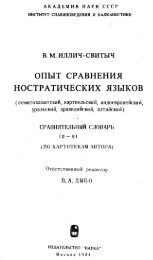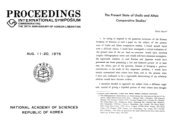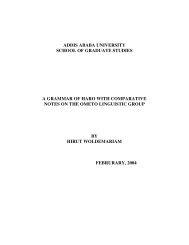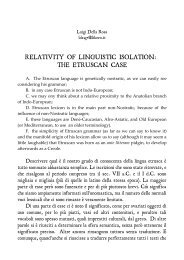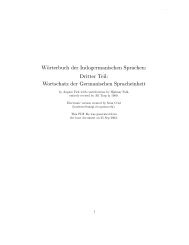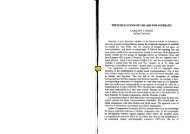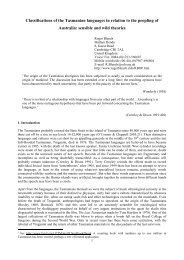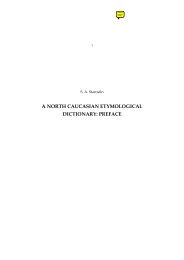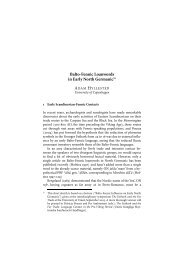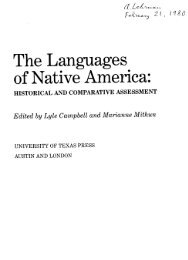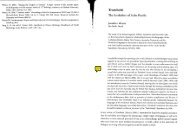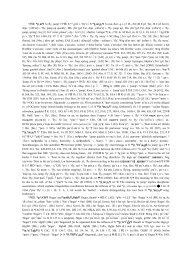The Indo-European Elements in Hurrian
The Indo-European Elements in Hurrian
The Indo-European Elements in Hurrian
You also want an ePaper? Increase the reach of your titles
YUMPU automatically turns print PDFs into web optimized ePapers that Google loves.
26 2. Phonology, Writ<strong>in</strong>g Systems, Texts<br />
- <strong>in</strong> I 87 , I 115 , II 21 , II 24 , II 61 , II 68 ,<br />
III 9 ,<br />
- <strong>in</strong> I 81 , I 81 , II 58 , II 70 ,<br />
II 86 , II 104 ,<br />
III 103 ,<br />
Is this corpus a reason to th<strong>in</strong>k and are anyth<strong>in</strong>g but graphic variants? <strong>The</strong><br />
reasons not to believe are: (1) never appears <strong>in</strong>itially; (2) some items seem to be variants<br />
of the same words: Mit. II 68 = Mit. II 70 ; Mit. I<br />
87 = Mit. I 81 . <strong>The</strong>re is no basis for a contrast between */Ku/ and<br />
**/Ko/. <strong>The</strong> signs and are variants.<br />
Another claim of that theory is that and should contrast. and would<br />
stand for *[k/gi] and *[k/ge]. 59 <strong>The</strong> <strong>in</strong>stances of and <strong>in</strong> the Mitanni letter are:<br />
a) Initial position:<br />
- <strong>in</strong> I 96 , II 87 , II 103 ,<br />
II 114 ,<br />
- <strong>in</strong> II 7 < I Gi-li-i-an>, II 16 , II 20 ,<br />
II 22 , I 53 , II 54 ,<br />
II 63 , III 18 ,<br />
b) Non-<strong>in</strong>itial position:<br />
- , always gem<strong>in</strong>ate, <strong>in</strong> I 97 , II 16 , II 52 ,<br />
II 103 , III 3 ,<br />
- , never gem<strong>in</strong>ate, <strong>in</strong> I 101 < d Ši-mi-i-gi-[...]>, I 105 < d Ši-mi-i-gi-ni-e-wə>, I<br />
106 < d Ši-mi-i-gi-níš>,<br />
What are the <strong>in</strong>dications that and may contrast? What is the difference<br />
between and , which appears several times <strong>in</strong> the letter? And<br />
word-<strong>in</strong>ternally, we can see that is never gem<strong>in</strong>ate and is always gem<strong>in</strong>ate. <strong>The</strong>re is<br />
no basis for a contrast between */Ki/ and **/Ke/.<br />
<strong>The</strong> theory about the Mitanni letter hav<strong>in</strong>g a “special” cuneiform convention is a fiction.<br />
<strong>The</strong> distributional features of the cuneiform signs conflict with this approach.<br />
59 Cf. Wilhelm 2004a and Bush 1964:22.



